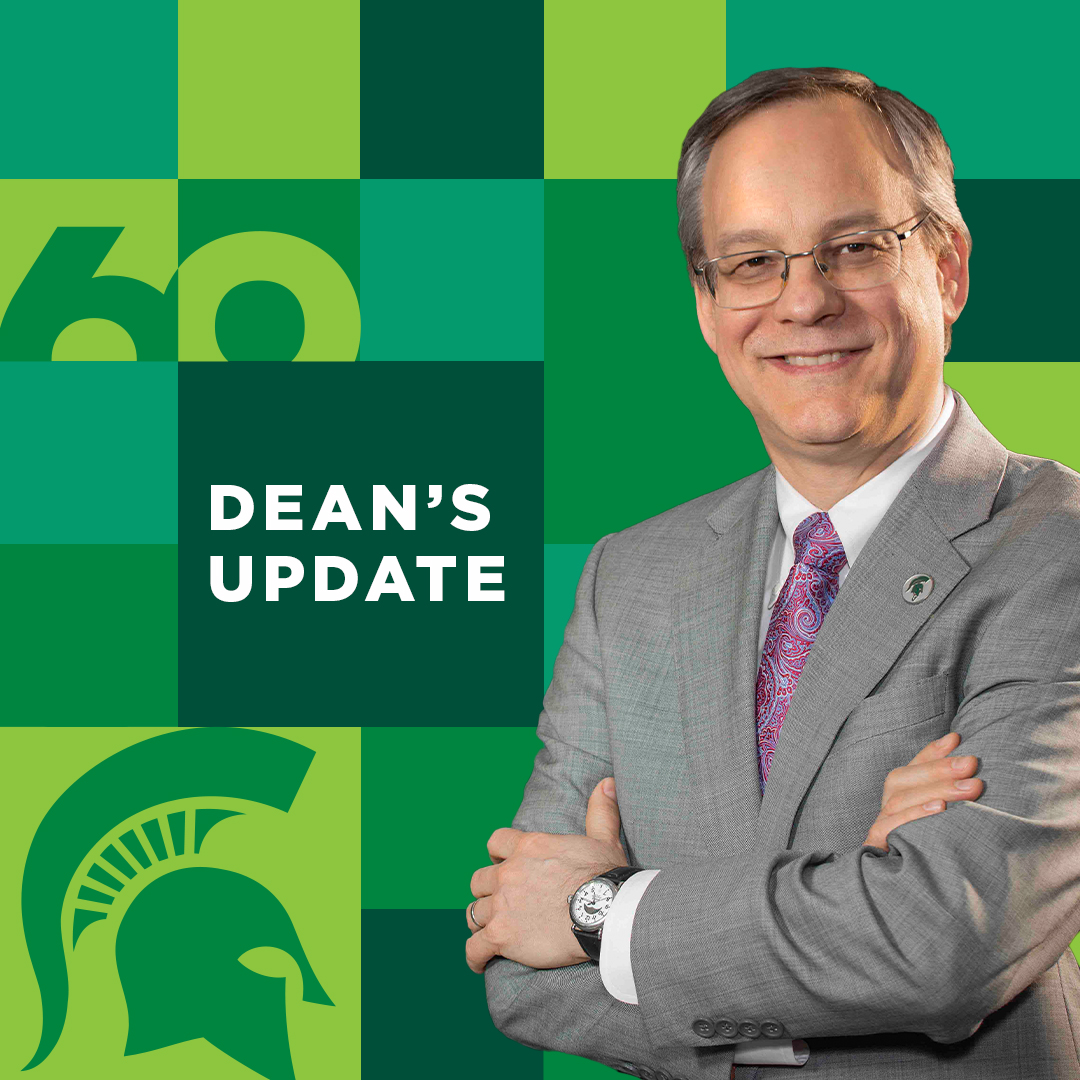Dean's Update
April 12, 2024 - Aron Sousa, MD

Friends,
This week, we celebrated the college’s 60th Anniversary at the Secchia Center with our first of a series of anniversary community Town Halls. We focused on the transformative period of the college’s class expansion in Grand Rapids. Panelists Dean Marsha Rappley, MD (’84), and Steve Heacock, JD, CPA, were in the thick of initial conversations and planning that took us from a series of false starts to a strategy for expansion in 2005 to the Secchia Center opening in 2010. Jack Lipton, PhD, joined the panel as the founding chair of Translational Neuroscience, nee’ the Department of Translational Science and Molecular Medicine (TSMM) nee’ the Division of TSMM. Liz Bushong, MS4, brought it all home for us with a student perspective. We had close to 80 people physically in Secchia Room 130 including other original key players in the effort, Birgit Klohs, who was president of The Right Place during the effort, and Dave Porteous, who was chair of the MSU Board of Trustees as MSU worked through its part of the process.
The 1960s was a time of many changes and challenges, and I often describe the college as a child of the ‘60s, conceived to be cooler and groovier (and with incipient AI?) than other medical schools. As imagined and founded, the faculty practice would be small and designed to support education rather than a clinical empire. Our medical degree curriculum would focus on primary care rather than specialties. While “traditional” science was important from the start of the college, research into medical education would be a first and leading scholarly effort of the college. Finally, the state would provide enough funding that we would not have to ask alumni for money. That was a successful model for a long time. Other schools did not challenge us for primary care, medical education research was supported by HRSA and was a relatively open field, and state funding was a large percent of the university’s income, which kept student costs down.
The world has changed since our founding. From the 1960s to the turn of the century, the state provided more funding for Michigan universities than students did, but since about 2002, the student tuition provides more university funding than the state. In fact the state now provides only 4% of its budget on higher education, while the national average is 10%. In the 1980s the state of Michigan provided more than 50% of budget of state universities, while student tuition was just about 35% of expenditures. Now, tuition is more than two-thirds of expenditures and state funding is below 25%. Around the time of the expansion, things had to change for the college.
We continue to focus on and celebrate educating primary care physicians, but our communities also need general surgeons, OB-GYNs, gastroenterologists, psychiatrists, and all the specialties that are necessary in our state. (And, heavens, where have all the rheumatologists gone?) The macroeconomics of clinical work has changed so much in the last 15 years that we now need a major partner. Our science work has blossomed. With the creation of the Department of Epidemiology and Biostatistics under Nigel Paneth, MD, in the ‘90s, the IQ under Chris Contag, PhD, in the ‘10s through the creation of the Charles Stewart Mott Department of Public Health last year, our science has expanded from the traditional basic and clinical sciences and ranges from the scale of photons for imaging through community scale public health studies – that is a lot of orders of magnitude.
Our fundraising focuses on supporting students through scholarships and faculty work through endowed professorships and programs. The loss of state funding over the years has made philanthropy and our institutional partnerships our main path to growth and excellence. My thanks to all of you who brought the college into the modern era through all these domains.
Each week, I am plugging the faculty and staff survey the college is doing. This is an important part of our Faculty and Staff Success pillar of the CHM Strategic Plan 2023-2030. We need some data to help direct our work, and this survey by the AAMC will allow us to compare our current experiences as faculty and staff to our prior data and our colleagues across the country. You access the survey through an email sent from StandPointSurveys@AAMC.org. If you are like me, the email landed in your Outlook “other” box. Don’t miss it if you can.
Serving the people with you,
Aron
Aron Sousa, MD, FACP
Dean, Michigan State University College of Human Medicine

